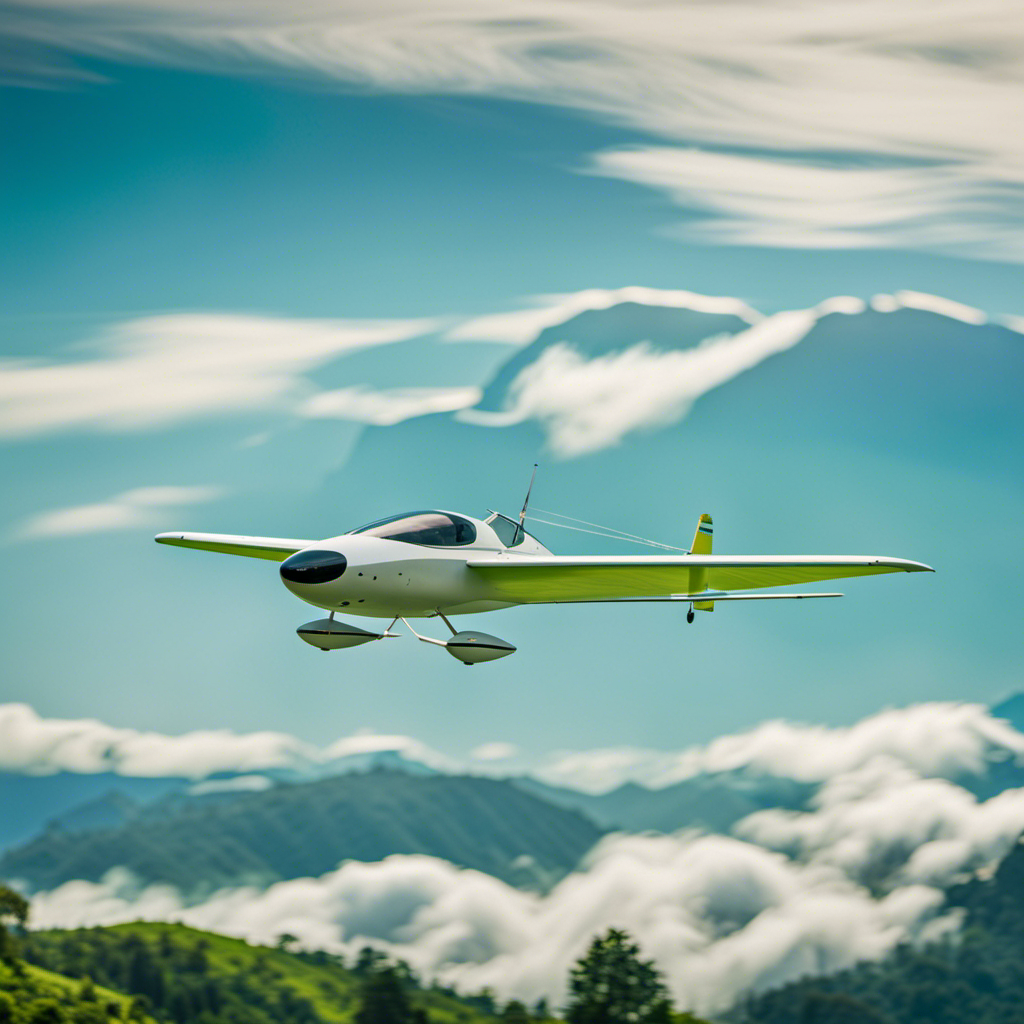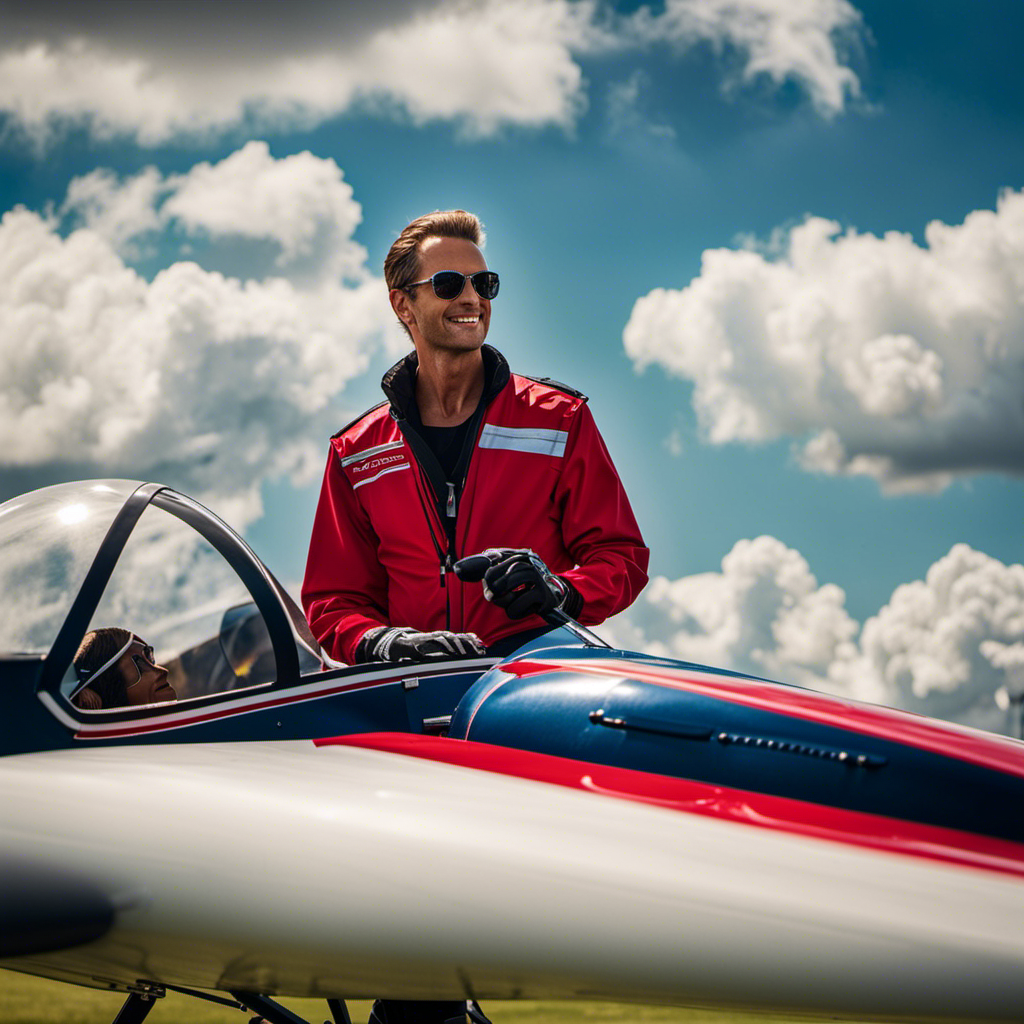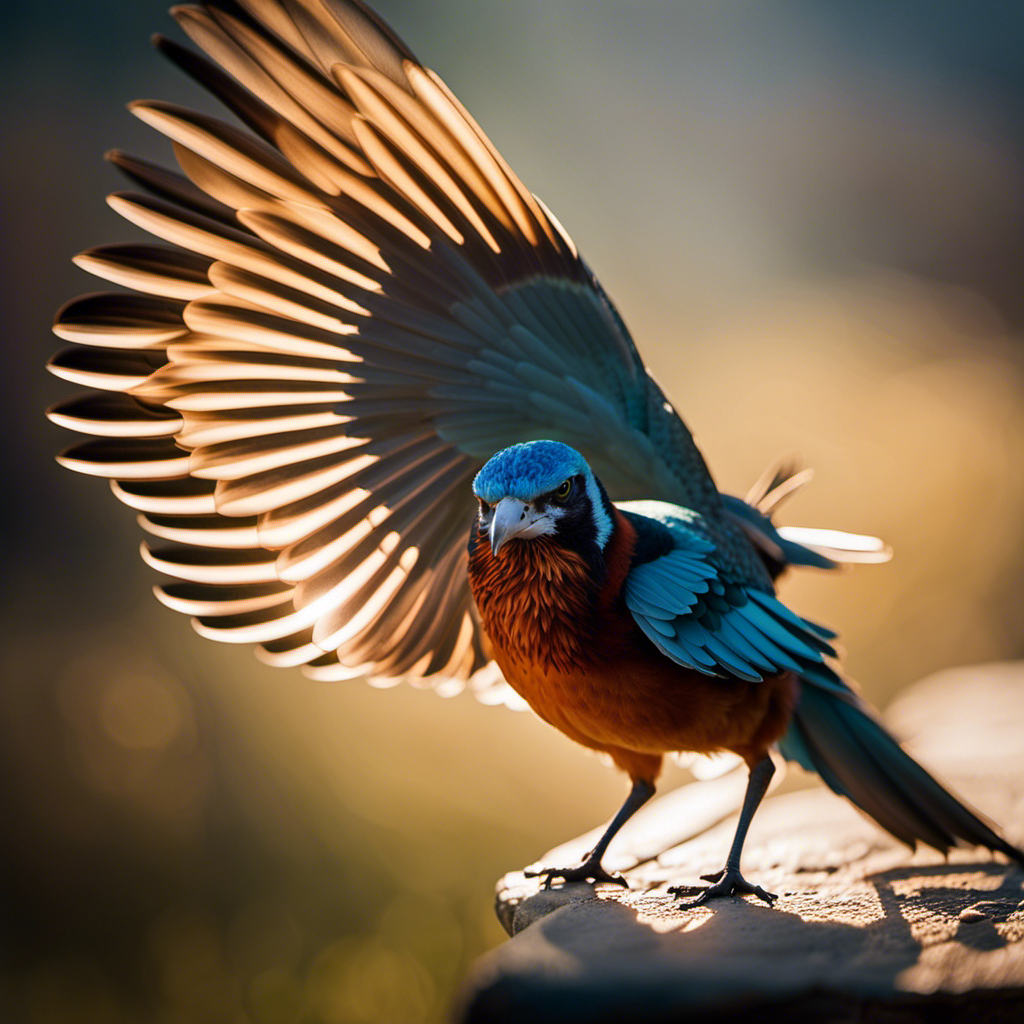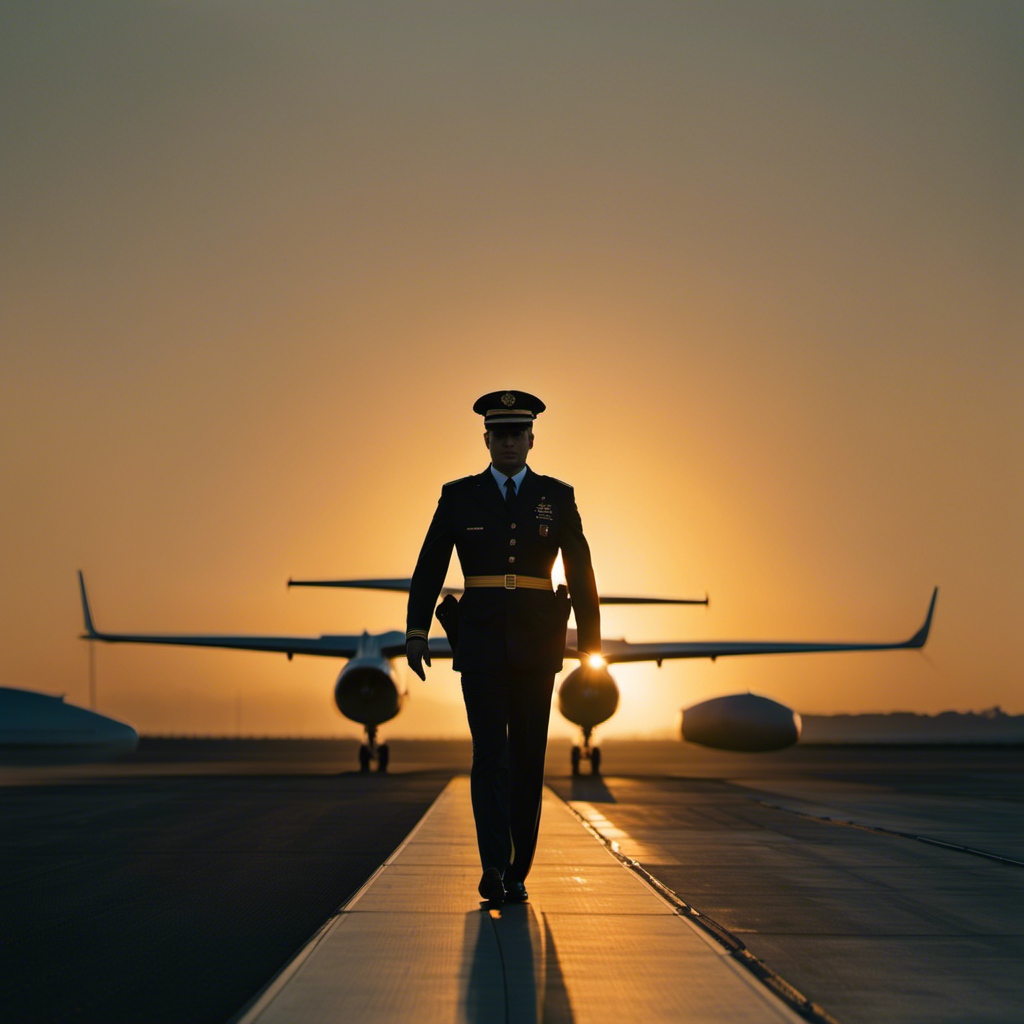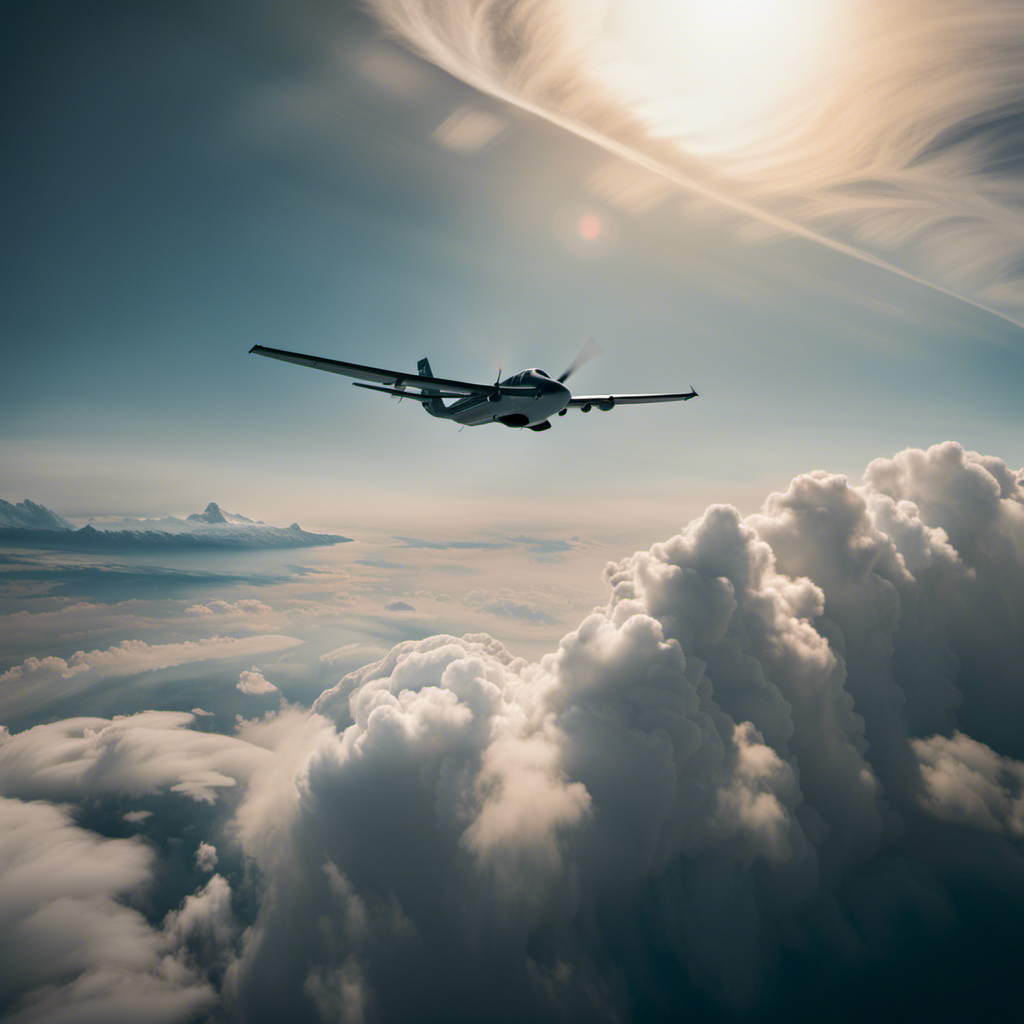As someone who is passionate about glider piloting, I can attest to the thrill and enchantment of soaring through the air.
Did you know that gliders have an impressive safety record, with a lower accident rate compared to other forms of aviation?
In this article, we will delve into the world of gliding and explore the various safety measures that ensure a secure and enjoyable experience.
From training requirements to emergency landing techniques, we will cover it all.
So fasten your seatbelts and let’s dive into the fascinating world of gliders and their safety.
Key Takeaways
- Gliders rely on lift and gravity to stay airborne, and pilots control them using weight shifts and control surfaces.
- Gliding competitions test pilots’ skills in distance, speed, and accuracy, adding excitement to the experience.
- Gliding requires proper training and licensing, including written exams and practical flight tests.
- Safety briefings, pre-flight inspections, regular maintenance, and adherence to regulations are crucial for ensuring glider safety.
The Basics of Gliding
Gliders are a type of aircraft that don’t have an engine. Instead, they rely on the forces of lift and gravity to stay airborne.
Gliding is a fascinating sport that requires specialized training techniques to master. Pilots must learn how to control the glider using weight shifts and the control surfaces, such as the ailerons and rudder. These techniques allow pilots to maneuver the glider smoothly and efficiently through the air.
Additionally, gliding competitions are a popular aspect of the sport. These events test pilots’ skills in areas such as distance, speed, and accuracy. Competing against other skilled glider pilots adds an exciting element to the experience.
As we delve deeper into the topic of glider safety, it’s essential to understand the training and certification requirements that ensure pilots are properly prepared for this unique form of aviation.
Training and Certification Requirements
When it comes to training and certification requirements, you’ll want to ensure that you have completed the necessary courses and met all the qualifications. Gliding is a technical and specialized activity that requires proper training and licensing. There are various training methods available, including classroom instruction, simulator practice, and hands-on flying experience. The licensing process involves a combination of written exams and practical flight tests to assess your knowledge and skills. To give you a visual representation of the training and certification requirements, here is a table outlining the necessary steps:
| Training Methods | Licensing Process |
|---|---|
| Classroom instruction | Written exams |
| Simulator practice | Practical flight tests |
| Hands-on flying | Skills assessment |
Safety Briefings and Pre-flight Inspections
Before you take off, it’s important to receive a thorough safety briefing and conduct a pre-flight inspection.
The safety briefing is of utmost importance as it ensures that you are aware of potential hazards and emergency procedures. It covers topics such as seatbelt usage, emergency exits, and the location of safety equipment. This briefing not only prepares you for unexpected situations but also instills confidence in your ability to handle them.
Once the briefing is complete, you must move on to the pre-flight inspection. This involves carefully examining the glider for any signs of damage or malfunction. You will inspect the wings, control surfaces, landing gear, and cockpit instruments. This comprehensive checklist ensures that your glider is in optimal condition for flight.
Now, let’s move on to the maintenance and inspections of gliders, where we will delve deeper into the steps involved in keeping these aircraft safe and airworthy.
Maintenance and Inspections of Gliders
Now that you’ve completed the safety briefing and pre-flight inspection, it’s time to discuss the importance of regular maintenance and inspections to ensure the airworthiness of your glider. Proper maintenance and inspections are crucial to keep your glider in optimal condition and prevent any potential issues during flight. Following maintenance schedules and using an inspection checklist can help you stay organized and ensure that all necessary tasks are completed. Here is a visual representation of the key components to consider during maintenance and inspections:
| Maintenance Schedule | Inspection Checklist |
|---|---|
| Check control surfaces for damage or wear | Inspect the glider for any signs of corrosion |
| Lubricate moving parts as needed | Check the integrity of the canopy and its seals |
| Inspect and clean the airframe | Check the condition of the landing gear |
| Check the condition of the instruments and avionics | Inspect the electrical system for any issues |
Weather Conditions and Flight Planning
Planning your flight according to current weather conditions is essential for a safe and successful journey. As a pilot, I understand the importance of analyzing the weather forecast and utilizing flight instruments to make informed decisions.
Flight instruments such as altimeters, airspeed indicators, and vertical speed indicators provide crucial information about the aircraft’s performance and position in the air. By constantly monitoring these instruments, I can assess the risk associated with the current weather conditions and adjust my flight plan accordingly. This includes avoiding areas of turbulence, thunderstorms, or strong crosswinds that could pose a threat to the safety of the flight.
Emergency Procedures and Protocols
During an emergency situation, you should immediately notify air traffic control and follow the established emergency procedures. It is crucial to stay calm and focused in order to effectively handle the situation.
Here are some important emergency procedures and protocols:
- Perform a thorough assessment of the aircraft’s condition and systems.
- Determine the most suitable emergency landing techniques based on the available options.
- Communicate with air traffic control to provide necessary information about the emergency and receive guidance.
- Follow proper emergency communication protocols to ensure clear and concise communication with ground support.
These procedures are designed to minimize risks and increase the chances of a safe outcome during an emergency.
However, it’s important to note that having the proper equipment and gear is equally vital. It ensures that you are well-prepared and equipped to handle any emergency situation effectively without compromising your safety.
The Importance of Proper Equipment and Gear
Having the proper equipment and gear is essential to effectively handle emergency situations and ensure your safety. When it comes to gliding, the importance of having the right gear cannot be overstated.
A well-equipped glider ensures that you are prepared for any potential hazards or unforeseen circumstances that may arise during flight. This includes having a reliable parachute, an emergency locator transmitter, and a comprehensive first aid kit.
Additionally, having the correct gear for weather conditions is crucial. This may include protective clothing, such as thermal suits or helmets, to shield you from extreme temperatures or potential head injuries.
By investing in the proper equipment and gear, you are taking proactive steps to prioritize your safety while gliding.
Transitioning to the next section, pilot experience and skill level play a crucial role in ensuring a safe gliding experience.
Pilot Experience and Skill Level
Transitioning to the next section, the experience and skill level of pilots are crucial factors in ensuring a smooth and secure gliding experience.
Pilot training plays a vital role in equipping pilots with the knowledge and skills necessary to handle various situations that may arise during a glider flight. From understanding aerodynamics and weather patterns to mastering emergency procedures, extensive training is essential.
Additionally, flight experience allows pilots to refine their judgment and decision-making abilities, which are paramount in ensuring the safety of both themselves and passengers. Seasoned pilots bring a wealth of knowledge and expertise to the cockpit, enabling them to navigate challenging conditions with confidence.
As we delve into the next section on air traffic control and communication, the proficiency of pilots in these areas becomes crucial in maintaining a coordinated and efficient airspace system.
Air Traffic Control and Communication
To ensure a smooth and efficient airspace system, you must maintain effective communication with air traffic control throughout your flight. Air traffic management is crucial in coordinating the flow of air traffic and ensuring the safety of all aircraft, including gliders.
As a glider pilot, it is essential to follow communication protocols to ensure that you are aware of other aircraft in your vicinity and any potential conflicts. This includes reporting your position, intentions, and any changes in flight path to air traffic control.
By actively participating in communication with air traffic control, you contribute to the overall safety of the airspace system.
Moving forward, it is important to understand the regulations and compliance in gliding, which ensure the safe operation of gliders.
Regulations and Compliance in Gliding
It’s important for glider pilots to understand and comply with the regulations in place to ensure the safe operation of their aircraft. Regulations enforcement is a critical aspect of aviation safety, and gliding is no exception.
Glider pilots must adhere to a set of rules and standards that govern their operations, including airspace restrictions, minimum altitudes, and traffic separation procedures. These regulations are enforced by aviation authorities to minimize the risk of accidents and maintain a safe operating environment.
In addition to regulatory compliance, glider pilots are also required to undergo safety training programs that cover topics such as emergency procedures, weather analysis, and navigational techniques. By following these regulations and participating in safety training programs, glider pilots can enhance their knowledge and skills, further ensuring the safety of their flights.
Transitioning into the subsequent section, a strong emphasis on safety records and accident prevention measures is crucial to maintaining the highest levels of safety in gliding.
Safety Records and Accident Prevention Measures
You should prioritize maintaining accurate safety records and implementing effective accident prevention measures. Safety is of utmost importance in gliding, and it is crucial to stay compliant with the relevant safety regulations.
Here are some key steps to ensure safety in gliding:
- Conduct regular inspections of gliders and equipment to identify any potential hazards.
- Train pilots on proper safety procedures and emergency protocols.
- Establish a comprehensive accident investigation process to identify the causes of accidents and prevent future occurrences.
- Implement safety regulations and guidelines provided by aviation authorities to ensure compliance.
- Continuously monitor and update safety practices to stay up-to-date with industry standards and best practices.
By following these measures, you can significantly reduce the risk of accidents and ensure the safety of everyone involved in gliding.
Now, let’s explore the next aspect: insurance and liability coverage.
Insurance and Liability Coverage
As we delve deeper into the safety aspects of gliding, one crucial aspect that cannot be overlooked is insurance coverage and liability protection. Gliding, being an adventurous activity, carries inherent risks, and it is essential to have appropriate insurance coverage to mitigate potential financial losses.
Insurance for gliders typically covers liability protection, damage to the aircraft, and bodily injury. Liability protection is especially crucial as it safeguards against any claims arising from accidents or damage caused to property or individuals during gliding operations. It provides peace of mind, ensuring that any unforeseen circumstances do not result in overwhelming financial burdens.
With insurance coverage and liability protection in place, gliders can focus on their passion for flying without worrying excessively about potential risks.
Now, let us transition to the subsequent section, where we will explore emergency landing techniques and procedures.
Emergency Landing Techniques and Procedures
Now that we’ve covered insurance and liability coverage, let’s move on to discussing emergency landing techniques and procedures. During a glider flight, it is crucial to be prepared for unexpected situations that may require an emergency landing. By following proper procedures and techniques, pilots can increase their chances of safely landing the glider. Here are some key techniques and procedures to keep in mind:
| Emergency Landing Techniques | Emergency Landing Procedures |
|---|---|
| Assess the Situation | Declare an Emergency |
| Choose a Suitable Landing Area | Communicate with ATC |
| Maintain Airspeed | Execute the Landing |
When faced with an emergency landing, pilots must quickly assess the situation and choose a suitable landing area. It is important to communicate with air traffic control (ATC) and declare an emergency, ensuring that necessary assistance is available. Throughout the landing, pilots should maintain a safe airspeed and execute the landing with precision and control. By familiarizing themselves with these emergency landing techniques and procedures, glider pilots can effectively handle unexpected situations and ensure the safety of both themselves and their passengers.
Transitioning into the subsequent section about ‘safety tips for gliding enthusiasts,’ it is essential to be well-prepared and equipped with the knowledge of emergency landing techniques and procedures. However, safety does not stop there. To fully enjoy the gliding experience, it is crucial to adhere to certain safety tips and precautions.
Safety Tips for Gliding Enthusiasts
Transitioning into the subsequent section about ‘safety tips for gliding enthusiasts,’ it is essential to be well-prepared and equipped with the knowledge of emergency landing techniques and procedures.
As gliding enthusiasts, we must prioritize safety and ensure that we are adequately prepared for any unforeseen circumstances. One of the most important aspects of gliding safety is understanding and practicing the proper gliding techniques. This includes maintaining a balanced and stable flight, making precise and controlled turns, and effectively controlling the glider’s altitude.
Additionally, emergency preparedness is crucial in ensuring a safe gliding experience. Familiarize yourself with emergency landing procedures, such as identifying suitable landing areas and executing emergency landings safely.
Conclusion: Enjoying the Thrill of Gliding Safely
To fully enjoy the thrill of gliding while prioritizing your safety, remember to always stay informed about gliding techniques and emergency preparedness. Gliding techniques are essential for a safe and successful flight. By mastering techniques such as thermalling, ridge soaring, and cross-country flying, you can enhance your skills and minimize the risks associated with gliding.
Thermalling is a technique that involves circling within a thermal to gain altitude. Proper understanding of thermals and how to effectively use them can help you stay airborne for longer periods.
Ridge soaring, on the other hand, involves flying along the edge of a ridge or mountain slope to use the wind’s upward motion. It is crucial to assess the wind conditions and choose the appropriate ridge for a safe and enjoyable flight.
Before every flight, it is essential to conduct a thorough risk assessment. This includes checking weather conditions, airspace restrictions, and evaluating your own skills and equipment. By assessing the potential risks involved, you can make informed decisions and ensure a safe gliding experience.
Frequently Asked Questions
Can gliders fly at night?
Yes, gliders can fly at night, but there are specific regulations that must be followed. Night flying requires proper lighting, instruments, and training to ensure safety. Glider regulations outline these requirements to minimize risks during nocturnal operations.
How long does it take to become a certified glider pilot?
To become a certified glider pilot, one must complete extensive training requirements under the guidance of a certified glider instructor. This involves mastering various skills, such as aerodynamics, meteorology, and emergency procedures, which can take several months to accomplish.
Are there any age restrictions for glider pilots?
There are age restrictions for glider pilots, as they need to meet certain physical and mental requirements. These restrictions ensure that only individuals who are capable and responsible can safely operate gliders.
Is it safe to fly a glider in bad weather conditions?
Flying gliders in strong winds and fog can be dangerous. Strong winds can cause turbulence and make it difficult to control the glider. Fog can significantly reduce visibility, increasing the risk of collision with obstacles.
What are the most common causes of glider accidents?
When it comes to glider accidents, pilot error and mechanical failure are the main culprits. Pilots must be meticulous in their decision-making and maintenance to ensure safe flights.
Conclusion
In conclusion, gliding is an exhilarating sport that can be enjoyed safely with proper training and preparation. By following the necessary procedures, such as completing training and certification requirements, conducting pre-flight inspections, and staying updated on weather conditions, gliders can minimize risks and ensure a safe flight.
Additionally, maintaining and inspecting gliders regularly, obtaining insurance coverage, and learning emergency landing techniques further enhance safety.
So, embrace the thrill of gliding and experience the joy of soaring through the skies while knowing you are in safe hands.
